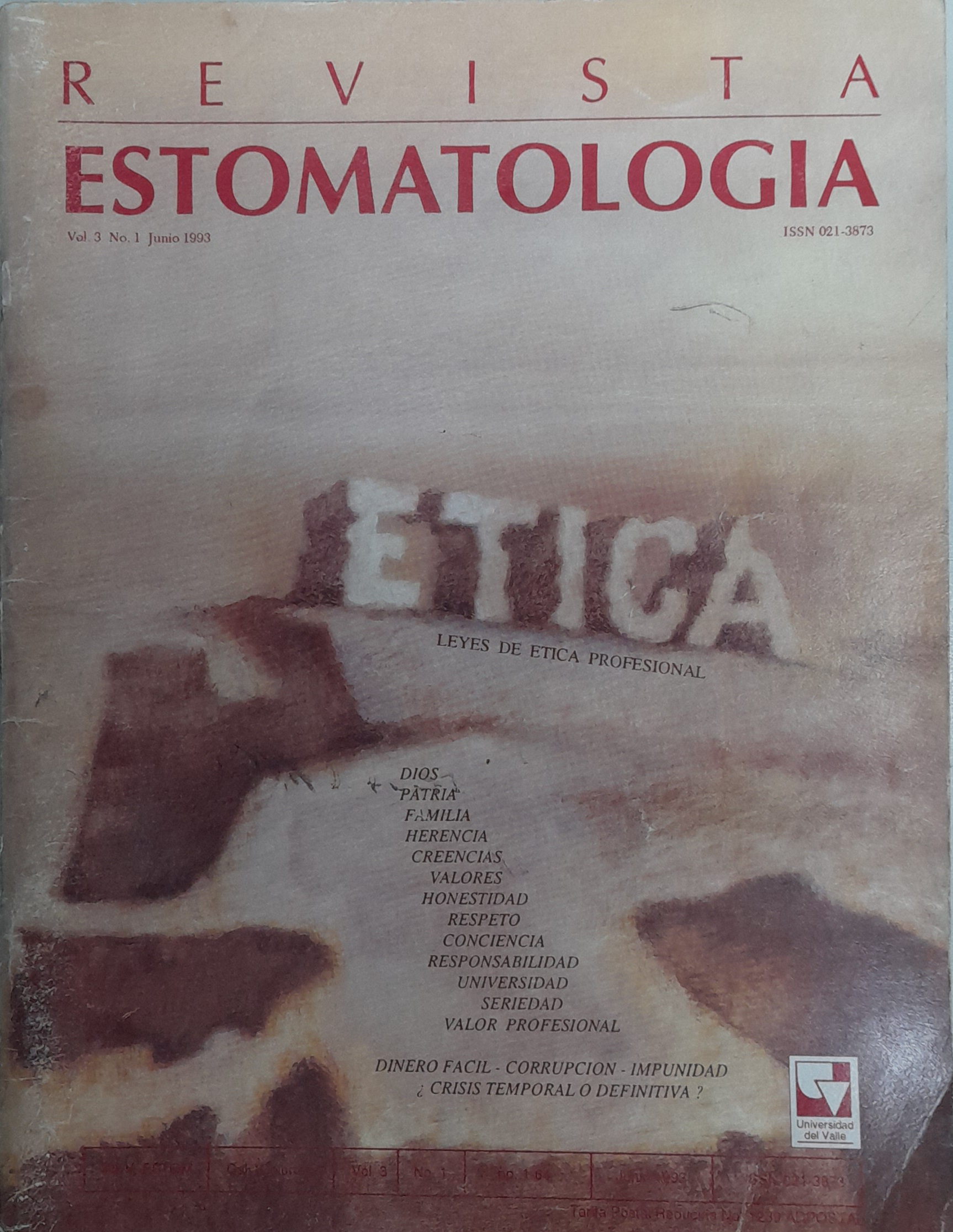Diagnóstico preliminar de esterilización en 60 consultorios odontológicos de Cali
Keywords:
Diagnóstico, Infecciones, Asepsia-antisepsiaMain Article Content
Many studies indicate that dentists, dental assistants and patients are at high risk in contracting comunicable infections because they are exposed to blood, saliva, crevicular fluid and debris or aerosol particles that can have pathogens such as bacteria, viruses and fungi. To prevent infections, dental workers must wear gloves, gowns, masks and take protective against splashes, spray or droplets as they are liable to be contaminated with pathogens. Routine safeguard techniques to control infections: e.g.: disinfection and sterilization must not be neglected. In this stlldy, sixty dentist were interviewed on these topics, focused on techniques of sterilization and disinfection, useof protective barriers and disposal waste material. The results showed that a wide variety of procedures in common use were unacceptable owoing to risk of crossinfections. More educational efforts must be directed at helping the dentists increase their scientific knowledge of different kinds of infective agents emphasizing mechanical-technical issues for protective techniques in infection control.
Downloads

This work is licensed under a Creative Commons Attribution-NonCommercial-NoDerivatives 4.0 International License.
Los autores/as conservan los derechos de autor y ceden a la revista el derecho de la primera publicación, con el trabajo registrado con la licencia de atribución de Creative Commons, que permite a terceros utilizar lo publicado siempre que mencionen la autoría del trabajo y a la primera publicación en esta revista.

